Wilting of both floricanes and primocanes together is characteristic of three raspberry diseases: Phytophthora Root Rot, Verticillium Wilt, and Crown Gall.
Phytophthora Root Rot (Phytophthora spp.) – is a common cause of wilting in red raspberries. It mostly occurs in heavy soils, where standing water occurs, or where plants have been heavily mulched.
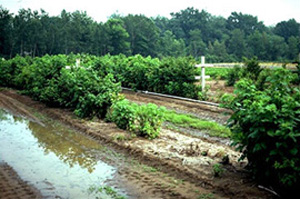
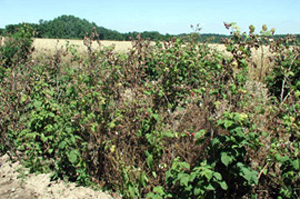
Canes suddenly wilt and turn brown at the onset of warm temperatures, usually in June.
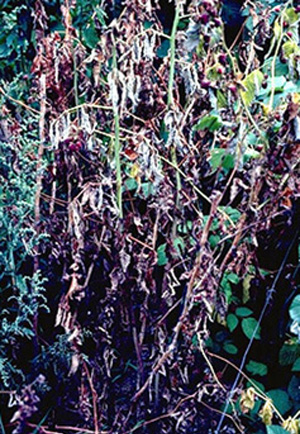
Field diagnosis involves removing the outer layer of epidermis on the roots and canes. Phytophthora infection is usually expressed as a chocolate-brown coloration of roots with a sharp transition to white, uninfected wood within the roots or crown.

More Phytophthora Root Rot information
Verticillium wilt, caused by the fungus Verticillium spp. also causes wilting of raspberries. Black raspberries are most susceptible to Verticillium wilt. It is most common when raspberries are planted after potatoes, tomatoes, or other solanaceous crops or weeds. Canes acquire a bluish cast during wilting. Verify diagnosis with a laboratory test.
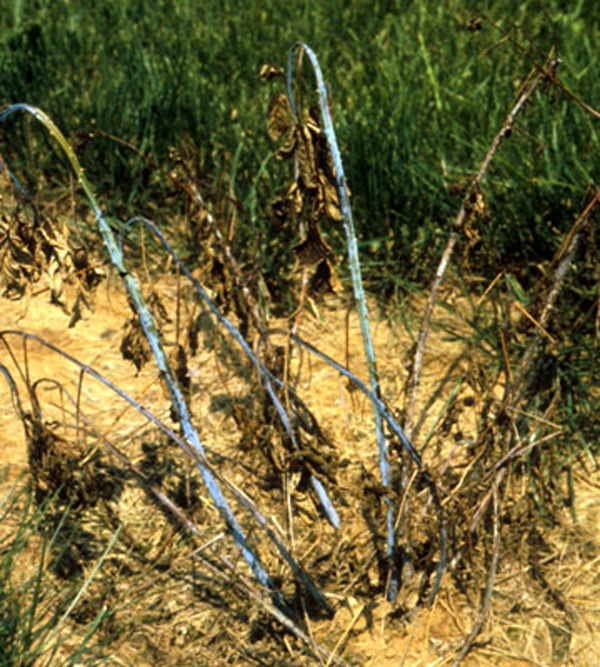
More verticillium wilt information
Crown gall, caused by the bacterium Agrobacterium tumefaciens, damages canes at the root level, causing wilting. Galls are often visible at the soil line …

… or on roots below ground. A. tumefaciens infects canes through wounds.
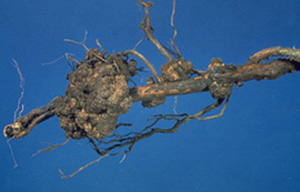
Similar damage can also be caused by snowy tree crickets.


